Answers to the Most Common Questions For Tattoo Customers
 Tattoo Trends
Tattoo Trends
Tattoo Trends: What’s In for 2025
There’s a classic argument from tattoo skeptics: “Will you still want that design when you’re in a nursing home?” The answer? A resounding yes. When Gen Z and millennials grow old, we’ll proudly sport tattoos of tiny tacos, minimalist jewelry designs, and hyper-realistic pet portraits. “People are more in-the-moment and less worried about how something will age,” says Portland-based tattoo artist Ian Haight.
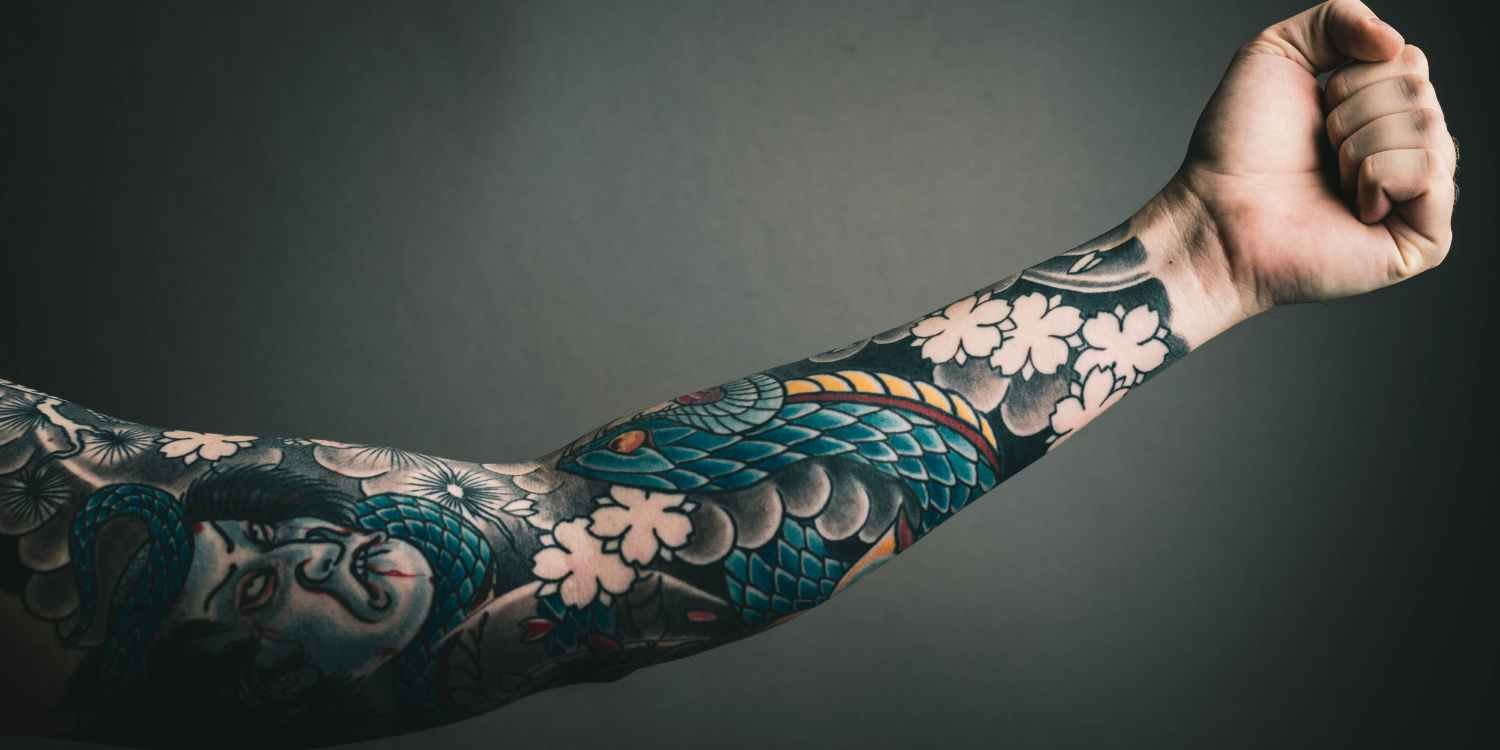
As tattoos continue to shed their stigma, rules about placement and style are disappearing. “There’s no longer a divide between ‘good tattoos’ and ‘bad tattoos,’” says Krizo Valkov, another Portland tattooist. “The industry has evolved beyond gatekeepers. Thanks to the internet, artists now have niche audiences who connect with their unique styles.”
Trending Tattoo Styles

Memphis Pattern
Think ‘80s graphic design: bold, colorful shapes floating in space, like something off a Trapper Keeper or the opening credits of Saved by the Bell. “People are embracing late ‘80s and ‘90s nostalgia,” says Haight. These tattoos often feature pastel triangles, neon green squiggles, or lightning bolts—breaking the traditional rule that tattoos need black outlines for longevity. “Sure, black lasts longer,” Haight admits, “but people just don’t care about that as much anymore.”

Realism Meets Two-Dimensional Design
Tattoo trends are all about mixing styles, and one of the most requested combos is hyper-realism with two-dimensional art. Ana Guzman, a tattoo artist in NYC, says clients are drawn to the playful contrast: realistic objects paired with intentionally flat, cartoonish elements. Think Bad Bunny’s tattoo of a realistic vase holding two-dimensional flowers.
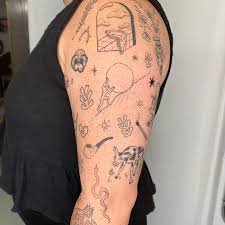
Sticker Sleeves
Instead of a full-arm piece, many tattoo lovers are opting for sticker sleeves—a collection of small, scattered tattoos. “It’s cute, delicate, and budget-friendly,” says NYC-based tattooist Rosa Bluestone Perr. Rather than saving up for a large piece, clients build their sleeve over time with tiny, meaningful (or totally random) designs. Haight describes this as the rise of lo-fi tattoos—simple, often impulsive designs. “People are embracing meaningless, silly tattoos. The idea that every tattoo has to have deep meaning is overrated,” he says.
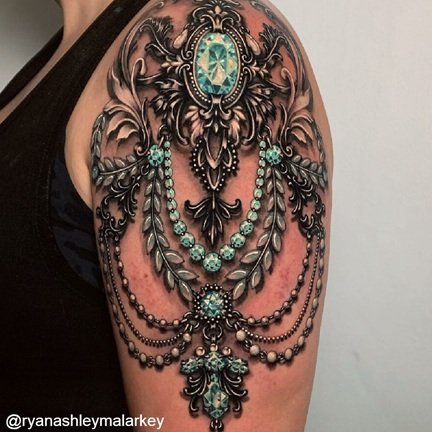
Permanent Jewelry Tattoos
Just as welded bracelets and anklets have become popular, tattooed jewelry is making waves. Bluestone Perr specializes in delicate inked rings and bracelets, often designed to mimic real jewelry. “They’re a beautiful adornment,” she says. “And unlike traditional jewelry, you can’t lose them.”

Pet Portraits
Micro-realism remains a favorite, but one particular subject is stealing the spotlight: pet portraits. Guzman notes a growing demand for hyper-realistic tattoos of furry companions. “People are obsessed with their pets and want to keep them with them forever,” she says.

Nostalgic Fan Tattoos
From SpongeBob SquarePants to Rugrats, nostalgic cartoons are making a comeback in tattoo form. Guzman has seen an uptick in clients requesting tattoos of childhood icons like Hello Kitty and Disney characters. The trend extends beyond animation—many are choosing tattoos inspired by books, movies, or childhood drawings that hold sentimental value.
 Most Painful Area to Get A Tattoo
Most Painful Area to Get A Tattoo
The Ten Most Painful Places to Get a Tattoo
Getting a tattoo can be an intense experience, but some parts of the body are undeniably more painful than others. Here’s a look at the ten most painful spots to get inked:

1. Head Tattoos: The head is one of the most painful spots due to its lack of fat, muscle, and skin protection, which leaves the needle closer to the skull. Additionally, its proximity to the trigeminal nerve makes this area highly sensitive.

2. Face Tattoos: Like the head, face tattoos are notorious for being excruciating, thanks to the thin skin and proximity to the bones. Areas like the forehead and nose bridge are especially painful, with the vibration from the tattoo machine amplifying the discomfort.

3. Foot Tattoos: With minimal fat and muscle, the foot is one of the most sensitive areas. The skin is thin, and the bones are close to the surface, making it a challenging spot for tattoo artists and leading to potential touch-ups.

4. Ankle Tattoos: The ankle is another bony area where the skin is thin, making tattooing difficult and painful. The lack of cushioning between the needle and bone adds to the discomfort.

5. Hand Tattoos: Like the feet, the hands have very little fat, muscle, or skin to provide protection, making them quite painful to tattoo. The numerous nerve endings, especially in the fingers and palms, can make the process especially uncomfortable.

6. Rib Cage Tattoos: The rib cage is a popular tattoo location, but it’s also one of the most painful. With little fat or muscle and a high concentration of nerves, combined with the movement from breathing, this area can be tough to endure.

7. Sternum Tattoos: Much like the rib cage, the sternum is painful due to the protruding bone, thin skin, and the dense network of nerves. The constant movement while breathing only adds to the discomfort during the process.

8. Elbow Tattoos: The elbow is a tricky spot, with some people finding it intensely painful. The proximity to the bone, the joint’s movement, and the lack of cushioning make this area tough to endure.

9. Butt Cheek Tattoos: Although the butt has more fat and muscle than other areas, the abundance of nerve endings makes tattooing here uncomfortable. The healing process can also be more difficult due to the area’s frequent use.

10. Inner Thigh Tattoos<: While the inner thigh might seem less painful, it can still be quite sensitive due to the skin’s sensitivity and the potential for friction with clothing, making the healing process slower and more painful.
💡Bonus: Genital Tattoos: The genital area is the most painful place to get a tattoo. This region’s extreme sensitivity and abundance of nerve endings make it a tough spot for many, and the recovery process can be especially challenging.
While these spots may be more painful, it’s important to remember that tattoos are a powerful form of self-expression, and the temporary pain is worth the lasting joy and meaning they can bring.
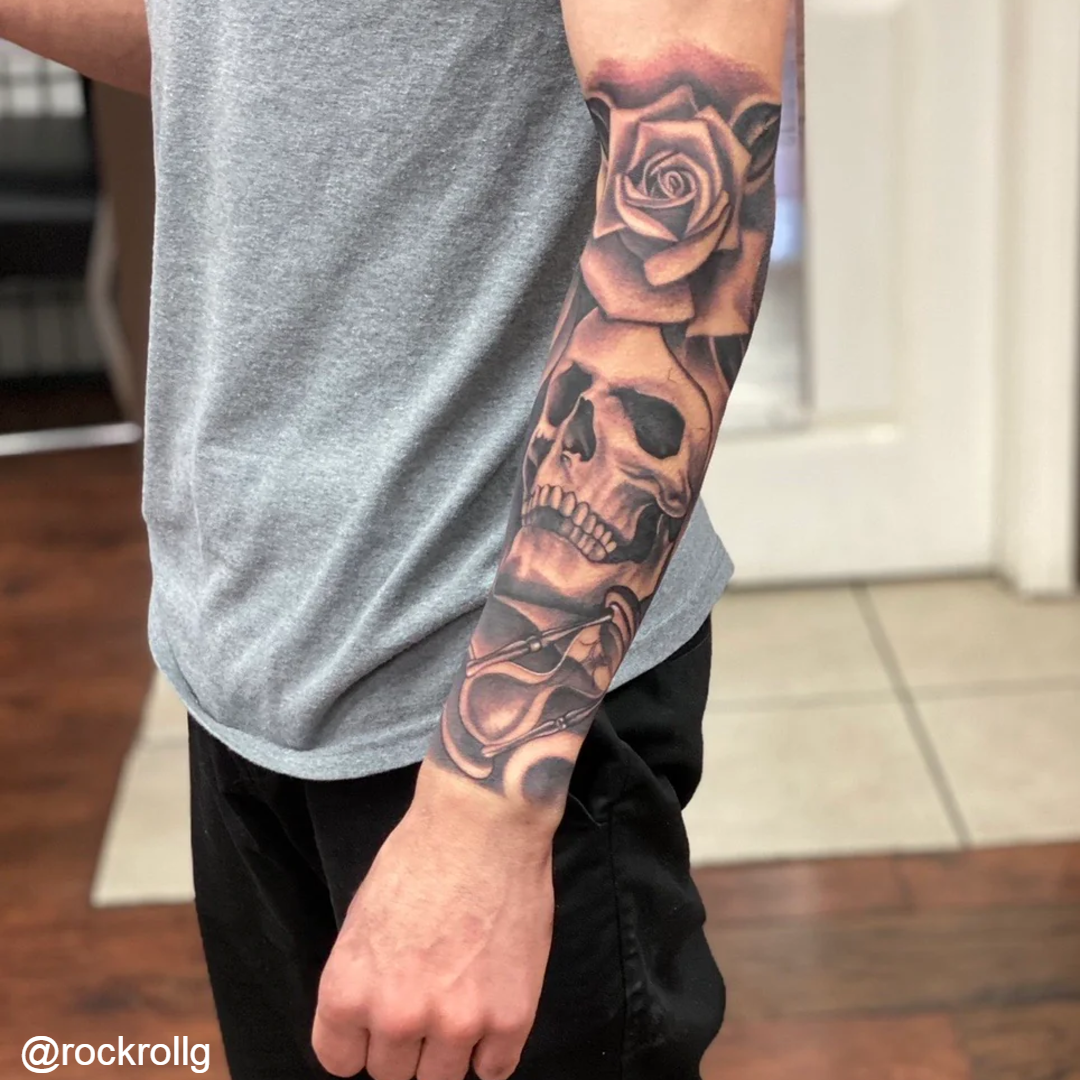 Least painful areas for a tattoo
Least painful areas for a tattoo
Least painful areas for a tattoo
The Truth About Tattoo Pain: Where It Hurts Less
Let’s be real—getting a tattoo hurts. But the good news? Some areas are far less painful than others.
If you’re planning your first tattoo or adding to your collection, you’re probably wondering: How painful is it? And does the placement make a difference?
The short answer: yes, it does. While everyone experiences pain differently, certain spots on the body tend to be more bearable. So, if you’re nervous about the pain, choosing the right placement can make a big difference.
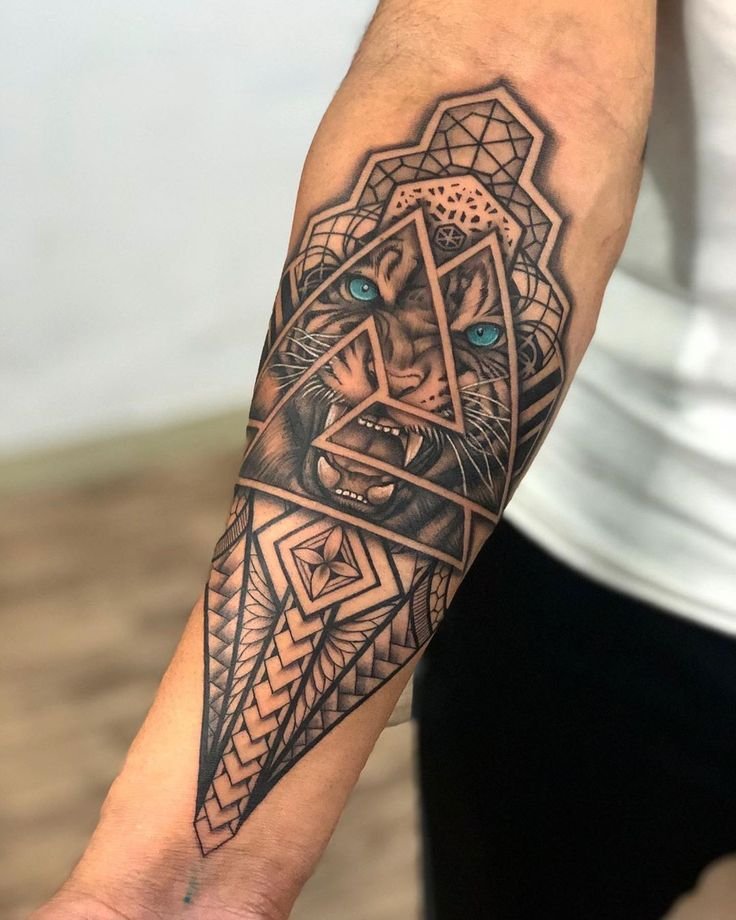
Where Does a Tattoo Hurt the Least?
In general, areas with thicker skin, fewer nerve endings, and a bit of fat cushion the pain better. On the flip side, bony areas or spots with lots of nerve endings—like the ribs, feet, or spine—tend to be more painful.
We asked our tattooed friends and the Stories & Ink team where they found tattoos the least painful. Here’s the top list:
1️⃣ Forearms (voted the least painful spot)
2️⃣Outer upper arms
3️⃣Outer shoulders
4️⃣Outer upper thighs
5️⃣Calves
6️⃣Lower back

If you’re getting your first tattoo, these areas might be a good starting point. That said, pain is subjective—some people find shins, scalps, fingers, and even chests to be surprisingly manageable!
Forearm Tattoos: The Most Bearable Spot
Forearms ranked #1 among our team as the least painful place to get inked.
Not sure if your chosen spot will hurt? Creative Director Mikkel Elkjaer has a simple trick:
“I always pinch myself where I’m getting tattooed to get an idea of how painful it might be.”
What Affects Tattoo Pain?
Pain tolerance varies from person to person, but several factors influence how much a tattoo might hurt:

✔ Your Age Some studies suggest that pain sensitivity decreases with age. However, many tattooed folks feel that sitting through long sessions gets harder over time. If you have a tattooed grandparent, ask them what they think!
✔ Biological Sex & Hormones
Research indicates that biologically female individuals may have a lower pain tolerance, though studies are limited. Additionally, hormonal changes—like menstruation—can make pain feel more intense.
✔ Tattoo Technique Your chosen tattoo style affects the pain level. Bold, heavy lines and color work can feel more intense than fine-line tattoos. Hand-poked tattoos are often gentler, but some people actually find them more painful than machine work.
✔ Session Length Shorter sessions tend to be less painful simply because they don’t last as long. The longer you sit, the more irritated your skin becomes—and staying in an uncomfortable position can make the pain feel worse.
✔ Your Tattoo Artist Some artists have a heavier hand, while others are more gentle. If possible, ask someone who’s been tattooed by your artist before to get an idea of their technique.
✔ Your Mindset & Expectations Pain perception is partly mental. If you go into your session expecting extreme pain, you might experience it more intensely. On the other hand, if you’re prepared for discomfort but not dreading it, you may find it easier to handle.
✔ How You’re Feeling That Day Being well-rested and properly fed can help. If you’re stressed, exhausted, or haven’t eaten, the pain may feel more intense.

“If I haven’t had enough sleep or a good breakfast before a tattoo, I definitely feel a difference in my pain tolerance,” one of our tattooed friends shared. “I always keep a snack on hand just in case.”
Special Cases: Scars, Stretch Marks & Cover-Ups
Tattooing Over Scars: The pain level depends on the depth and size of the scar. Your artist can guide you on what to expect.
Tattooing Over Stretch Marks: These areas can be more sensitive, so expect slightly more discomfort.
Cover-Up Tattoos: Since you’re tattooing over old ink (and possibly scar tissue), the pain may be more intense—but experiences vary.
Least Painful Spots by Gender
🔴 For Women: Areas with thicker skin and fewer nerve endings—like the outer shoulders or upper thighs—tend to hurt less.
🔴 For Men: The forearm and outer upper arm are the least painful, making them great choices for sleeve tattoos.
💡Final Thoughts
Yes, tattoos hurt—but choosing the right spot can make a big difference. If you’re new to tattoos or just want a more comfortable experience, consider starting with the forearm, upper arm, or thigh. And remember: pain is temporary, but your tattoo is forever!
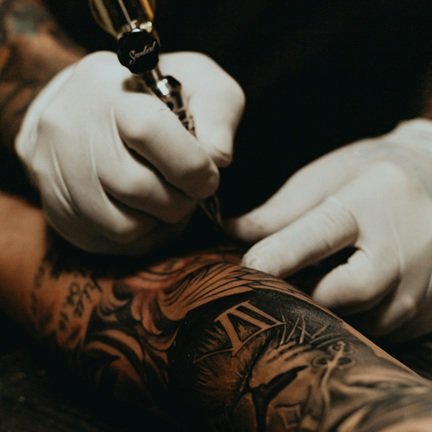 What to Look for In a tattoo artist
What to Look for In a tattoo artist
Finding the Perfect Tattoo Artist
So, you’ve decided to get a new tattoo—exciting! Now comes the crucial step: finding the right tattoo artist to bring your vision to life.
Much like job hunting, this process requires time, research, and clear communication. At TattooMe, we simplify the journey by guiding you to artists who match your style, budget, and expectations. This guide will walk you through everything you need to consider, from selecting a tattoo style to budgeting and choosing the ideal artist.

Define Your Style
Whether you have a clear design in mind or just a rough idea, you likely prefer a specific tattoo style. Tattoo styles vary widely—Black & Grey, Stick and Poke, Neo-Traditional, Blackwork, Tribal, Realism, and more. Most artists specialize in a particular style, so choosing one who regularly works within your desired aesthetic is key to achieving the best results.

Set Your Budget
Quality tattoos are an investment, and it’s worth saving up for the piece you truly want rather than settling for something less. Highly skilled and experienced artists may charge more, and some may have long waitlists. If your dream artist is booked or outside your budget, consider waiting and planning accordingly. Also, factor in travel expenses if the perfect artist isn’t local.

Do Your Research
With thousands of tattoo artists available, narrowing down your options can feel overwhelming. Platforms like TattooMe help streamline the process by offering artist directories and verified portfolios. Search for artists based on style and location to make the selection easier and ensure you’re looking at reputable professionals.

Communicate Clearly
A professional tattoo artist should be open to discussing your ideas, offering insights, and answering your questions. Don’t hesitate to reach out for clarity. For intricate or custom designs, many artists will create multiple drafts to refine the concept. If possible, visit the studio beforehand to observe the artist at work—just be sure to ask permission first.

Take Your Time
Unlike a job, a tattoo is permanent—so there’s no need to rush. Take the time to explore styles, get to know potential artists, and ensure your budget aligns before booking. A little patience now will lead to a tattoo you’ll love for a lifetime.
 Face Tattoos what to consider before you commit
Face Tattoos what to consider before you commit
Face Tattoos: What You Should Know Before Getting One
Why Do People Get Face Tattoos?
People choose face tattoos for various reasons—self-expression, spirituality, life changes, or simply for fun. In recent years, celebrities like Chris Brown, Amber Rose, Lil Wayne, Justin Bieber, and Kat Von D have helped make face tattoos more socially accepted. However, they remain a controversial choice.
Important Considerations Before Getting a Face Tattoo
If you’re thinking about getting a face tattoo but are unsure whether it’s the right decision, here are some key factors to consider:
💰Cost and Maintenance
Face tattoos often come at a higher price than tattoos on other body parts. Costs vary based on location, tattoo size, color, and ink type. Expect to spend a significant amount, as reputable artists may charge thousands for the procedure. Additionally, not all tattoo artists are willing to tattoo faces, which may require traveling to find the right artist.
Since face tattoos require regular upkeep, be prepared for ongoing costs. If you ever want a cover-up or removal, those procedures are expensive as well.
📆Longevity and Maintenance
Like any other tattoo, face tattoos require care and touch-ups over time. If you’re not prepared for maintenance costs, this may not be the best choice for you.
Visibility and Covering Options
Face tattoos are highly visible, making them difficult to conceal. If you end up regretting your decision, covering them with makeup or bandages is possible but inconvenient. Removal options like laser treatments are costly and may not fully erase larger tattoos.
Cultural and Social Acceptance Face tattoos remain controversial in many cultures. Some traditional societies have deep-rooted tattoo practices, but cultural appropriation is a concern. Be mindful of how your tattoo choice may be perceived in different settings.
Personal Motivation Before committing, ask yourself why you want a face tattoo. If your goal is to mark a new life direction, consider other ways to achieve this change without permanently altering your appearance.
👉FAQ About Face Tattoos
Can You Get a Job With a Face Tattoo?
Finding a job with a face tattoo can be more challenging. While not impossible, some employers may have strict policies against visible tattoos.
Do Face Tattoos Hurt?
Yes, face tattoos tend to be more painful due to the lack of fat and muscle in the area.
Can You Cover Up a Face Tattoo?
Yes, but it can be difficult. Makeup and waterproof bandages can help, but finding the right product may take some trial and error.
Is Laser Removal an Option?
Laser removal is possible, but it’s more effective on smaller tattoos. Larger designs may require multiple sessions and still might not be completely removed.
How Much Does a Face Tattoo Cost?
Prices vary based on the artist, design, and size. Generally, face tattoos cost more due to the delicate nature of the area.
Do Face Tattoos Fade Over Time?
Yes, they can fade depending on factors like ink quality, sun exposure, and skin care. Proper aftercare can help maintain the tattoo’s longevity.
Popular Face Tattoo Ideas
If you’re committed to getting a face tattoo, here are some meaningful designs to consider:

Stars – A simple yet artistic choice
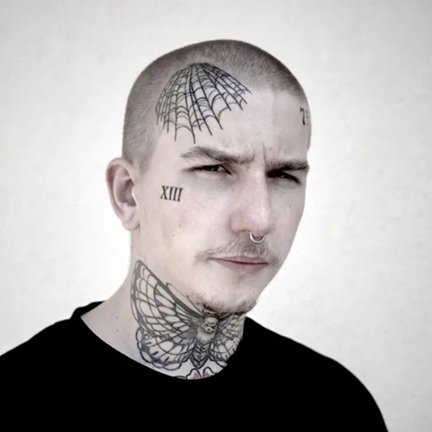
Spider Webs – Symbolizing life, death, or personal struggles

Skulls – Representing mortality and resilience

Angel Wings & Flames – Expressing spirituality or transformation

Anchors – A symbol of stability and hope
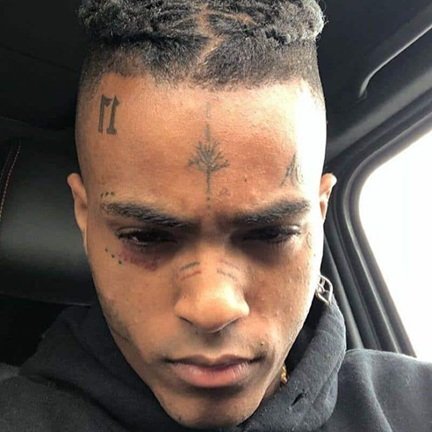
Trees – Signifying growth and family connections

Feathers – Representing peace and serenity
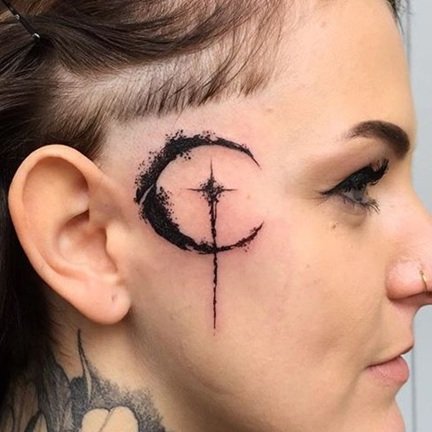
Moons – Symbolizing mystery, renewal, or transformation

Roses – Representing love and beauty

Diagonal Lines – A minimalist but striking choice

Hearts – Symbolizing love, strength, and courage
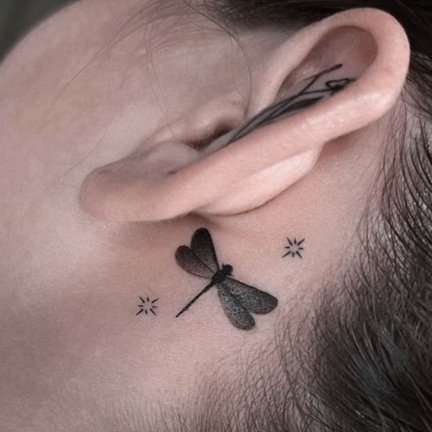
Dragonflies – Signifying transcendence and change
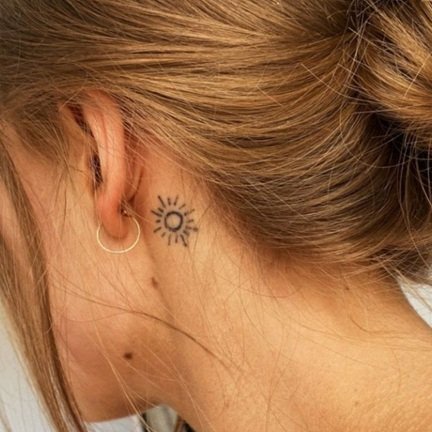
Sun Rays – Representing growth and energy

Teardrop Tattoos – Often associated with mourning, but also redemption
Final Thoughts
Getting a face tattoo is a significant decision. It can be a bold and artistic way to express yourself, but it’s essential to do thorough research and choose a reputable tattoo artist. Additionally, proper aftercare will help maintain the tattoo’s quality and longevity. Make sure this choice aligns with your long-term goals before committing.
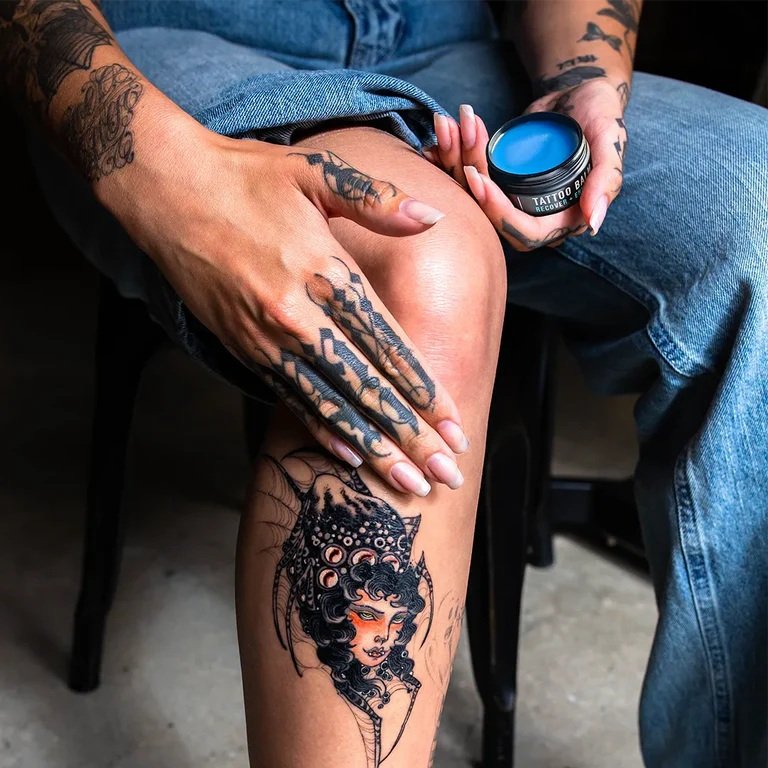 Tattoo After Care
Tattoo After Care
Tattoo Aftercare: A Guide to Caring for Your New Ink
Taking proper care of your new tattoo is crucial for a smooth and quick healing process. This guide will walk you through essential aftercare steps, key products to use, and important precautions to ensure your tattoo heals beautifully.
Key Aftercare Steps:

Initial Bandage: Keep the bandage on for at least two hours after getting your tattoo.

Cleansing: Once you remove the bandage, gently wash your tattoo with an antibacterial, fragrance-free soap and warm water.
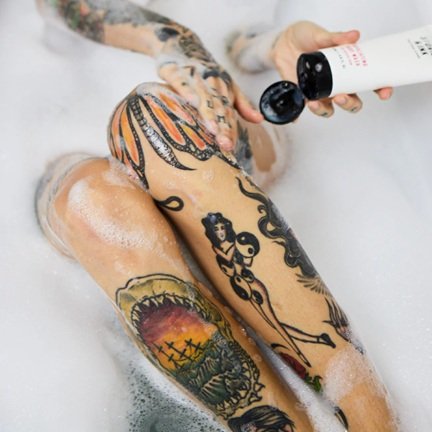
Avoid Submerging: Stick to showers for 2-3 weeks to avoid soaking the tattoo in water, which can expose it to bacteria.
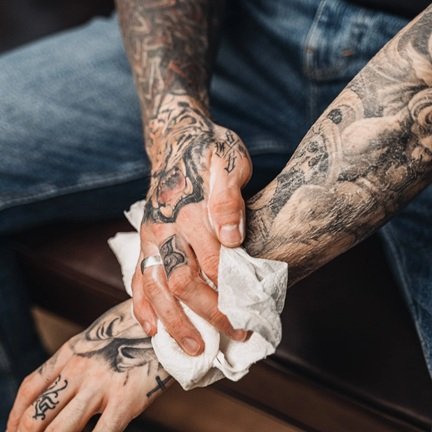
Regular Cleaning: Wash your tattoo 1-2 times a day, especially if it’s oozing.
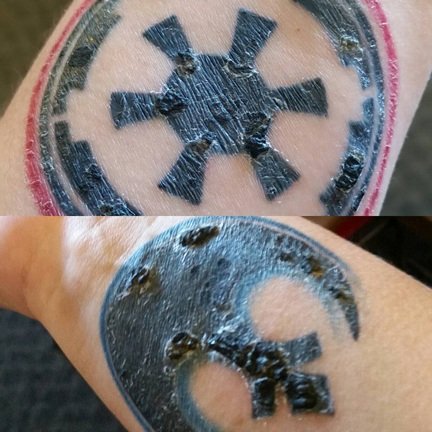
No Picking or Peeling: Don’t pick at or peel scabs; let them heal naturally.
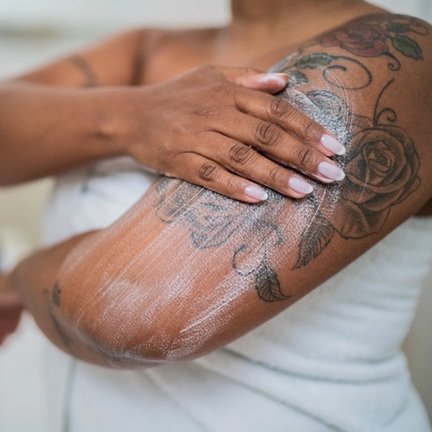
Moisturize Carefully: If your tattoo feels dry, apply a small amount of coconut oil or a fragrance-free lotion. Avoid over-moisturizing.

Sun Protection: Do not apply sunscreen to a healing tattoo. Instead, cover it with clothing to protect it from direct sunlight.
Recommended Products:
🔹Use lotions, butters, or oils that are free from synthetic chemicals.
🔹Coconut oil, especially unrefined Virgin coconut oil, is highly recommended for aftercare.
Important Precautions:
1️⃣ Sun Exposure: Sunscreens are not suitable for fresh tattoos. Always cover the tattoo when going out in the sun.
2️⃣ Tight Clothing: Avoid tight clothing that may rub against the tattoo. Choose loose-fitting clothes to prevent irritation.
3️⃣ Sleeping: Sleep with your tattoo exposed to air if possible. If necessary, place a clean, thin towel over it to prevent it from sticking to sheets.
4️⃣Avoid Picking: Do not pick, scrub, or scratch scabs. Allow your tattoo to heal naturally.
5️⃣Avoid Baths: Stick to showers instead of baths for 2-3 weeks to prevent bacterial exposure.
Symptoms to Watch For:
🔥 Pimples: If you notice pimples around your tattoo, it could be a sign of over-moisturizing. Cut back on lotion or oil.
⚠ Seek Medical Help: If you experience severe pain, prolonged plasma oozing, or thick scabs with bleeding, contact a healthcare professional.
By following these aftercare steps, you’ll help ensure that your tattoo heals properly and stays vibrant for years to come. While the effort may seem demanding at first, it pays off with a beautifully preserved tattoo that will continue to impress. Good luck with your healing journey!
 Tattoo Shop Etiquette: How to Be a Great Client
Tattoo Shop Etiquette: How to Be a Great Client

Have a Clear Idea: Before your appointment, know what design you want. Bringing reference images is super helpful, giving your artist a solid base to work with and perfect for the final design.

Stay Fresh: Tattooing involves close contact, so come showered and, if possible, shave the area you’re getting tattooed. It’s a small gesture that your artist will appreciate.

Dress Appropriately: Wear clothes that make it easy to access the area being tattooed. Dark-colored clothing is ideal since it will help avoid ink stains. Also, wear something comfortable—you’ll be in it for a while!

Take Care of Your Body: Get plenty of rest before your appointment and stay hydrated. Having a snack or high-energy food will help, too. Avoid coming in intoxicated, as most artists won’t work under those conditions.
Go Solo (or Bring One Friend): It’s best to show up alone or bring just one guest. If you do bring a friend, check with the shop beforehand to see if they can accommodate it. Large groups can be tough in smaller spaces.
Don’t Rush It: Tattoos take time, and while artists can give estimates, it’s not always possible to predict exact times. If you have time constraints, it’s better to reschedule so the artist can focus on getting the best result for you.
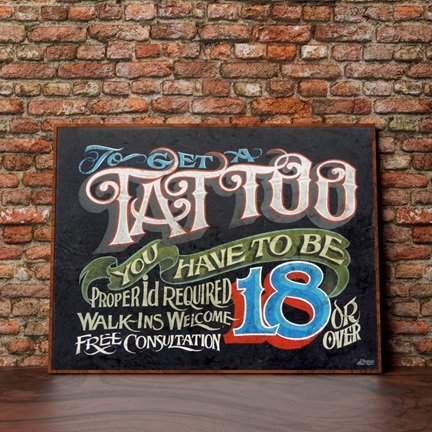
Leave Kids at Home: Most tattoo shops don’t allow children, especially babies and toddlers. The environment may not be safe or suitable for young ones due to hazardous materials and adult conversations.

Stay Still: A still body ensures clean, precise lines during the tattooing process. If you need to adjust, communicate with your artist so they can work with you.
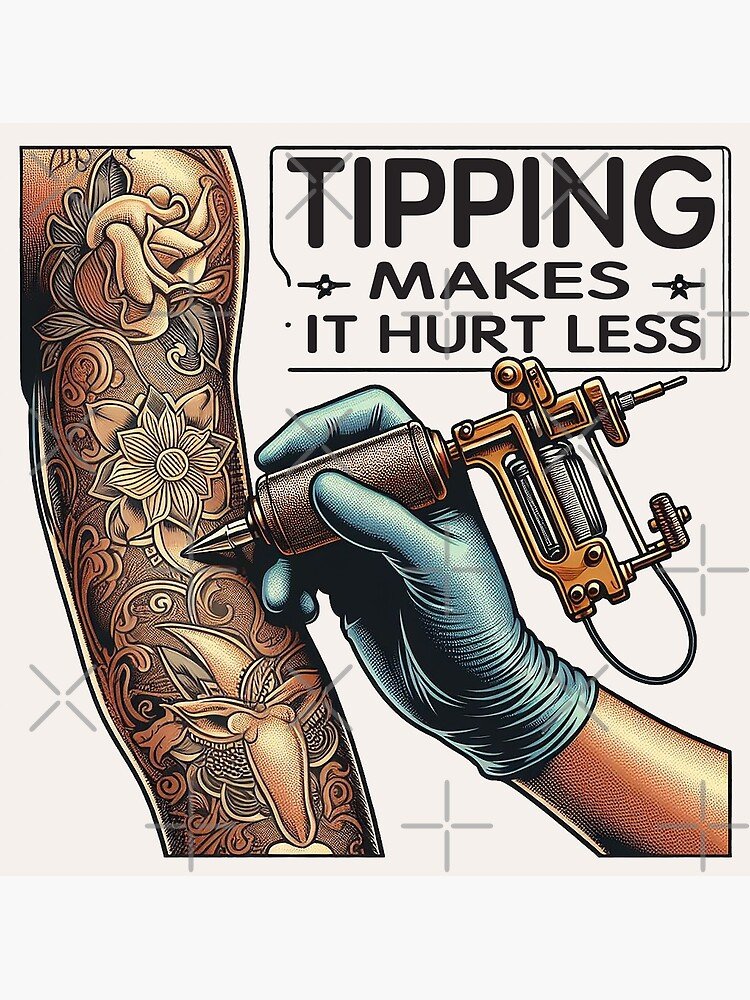
Tipping is Appreciated: Gratuity is customary, and it’s a great way to show appreciation for your artist’s skill. Not sure how much? Ask at the front desk for guidance.

Follow Aftercare Instructions: Proper aftercare is key to the healing of your new tattoo. Follow the artist’s instructions closely to help your tattoo heal well and look its best.
Whether you’re walking in or booking in advance, following these tips will help ensure a smooth, enjoyable tattoo experience and help you build a strong relationship with your artist for future ink!
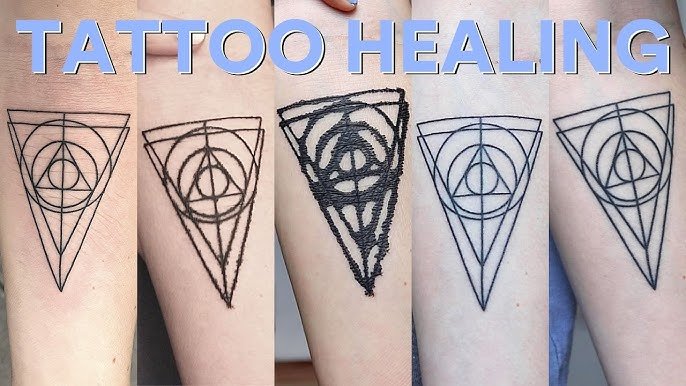 How long does it take for a tattoo to heal
How long does it take for a tattoo to heal
How Long Does It Take for a Tattoo to Heal?
The full healing process for a tattoo usually takes 2-3 weeks, but complete healing, including deeper layers of skin, can take up to 4 months. Here’s what to expect at each stage:

Day 1: Bright, Fresh, and Tight
• Your tattoo will appear vibrant and bold, resembling the initial design seen at the tattoo shop.
• Since it’s essentially an open wound, keep it clean using antibacterial soap. Don’t rub or scratch it, and apply a thin layer of A&D ointment.

Days 2-6: Oozing
• Plasma will ooze from the tattoo, mixing with ink and blood cells.
• Your skin may feel warm as inflammation occurs, a sign that white blood cells and plasma are working to close the outer layer.
• Avoid soaking in baths or hot tubs during this phase, and continue applying A&D ointment.

Days 7-14: Scabbing and Flaking
• The outer layer of skin starts to form scabs, providing a protective layer.
• Don’t pick or peel the scabs off. Use a gentle, fragrance-free lotion to keep your skin moisturized.
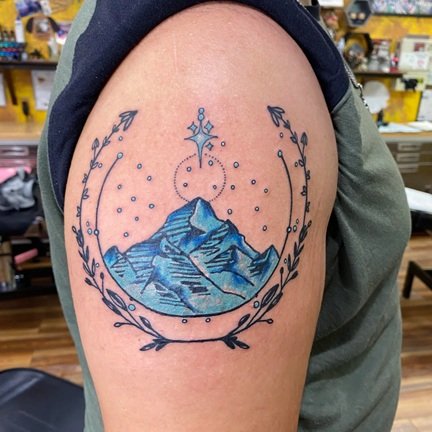
Days 15-30: Fading but Clean
• Scabbing and flaking will subside, and the tattoo may look slightly duller, but it’s healing well.
• The outer skin layer will settle in, and moisturizing regularly helps maintain the tattoo’s vibrancy.
Throughout the Healing Process:
• Keep an eye out for signs of infection, such as fever, redness, swelling, pus, raised tissue, or rashes. If these persist, see a doctor.
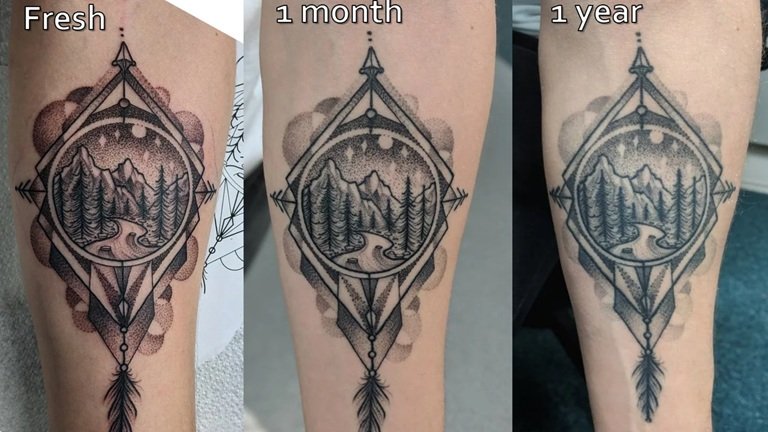
• Follow your tattoo artist’s aftercare instructions, including cleaning with antibacterial soap, avoiding pools or tubs, and protecting the tattoo from the sun.
• If anything seems off, contact your primary care physician instead of your tattoo artist for medical advice.
Healing times may vary for each person, but with proper care, your tattoo will remain beautiful and well-maintained.
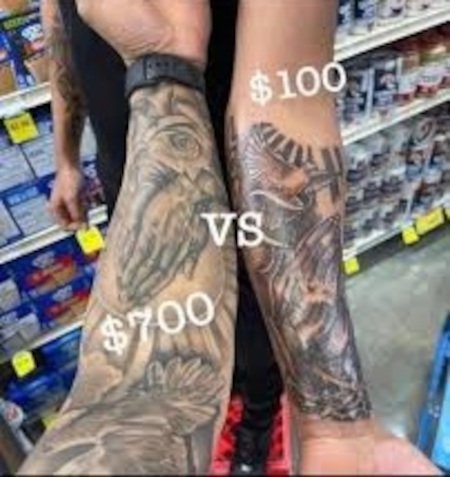 How much does a tattoo cost
How much does a tattoo cost
How Much Does a Tattoo Cost?
Title: Key Factors Affecting Tattoo Prices: A Complete Guide
Introduction:
Understanding the various elements that influence tattoo prices is essential for anyone thinking about getting a tattoo. This detailed guide breaks down factors such as the artist’s skill and reputation, location, design complexity, and tattoo size and placement, all of which contribute to the overall cost.
Summary:
Tattoo pricing is determined by a variety of factors, including the studio’s location, the artist’s expertise, and the tattoo’s size and placement. Artists also factor in costs for studio space and materials, highlighting the value of their craftsmanship. High-quality tattoos tend to be more expensive, affirming the saying, “Good tattoos aren’t cheap, and cheap tattoos aren’t good.” Additionally, tipping the artist is a customary way to show appreciation for their work.
Researching Tattoo Prices:
When researching tattoo costs, it’s important to consider several aspects, such as the parlor’s location, the artist’s fees, the tattoo’s size and placement, and any extra costs that may arise. Opting for a registered, professional tattoo studio is key to ensuring a safe and high-quality experience.
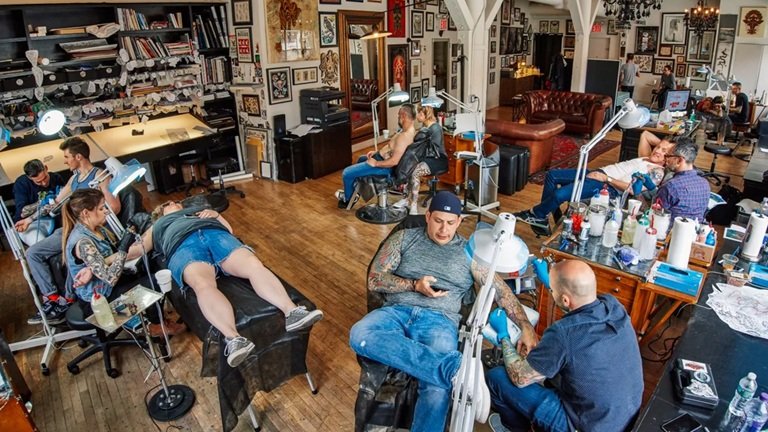
Location of the Parlor:
Tattoo prices can vary greatly depending on location, with each shop typically setting its minimum charge. Costs may also be influenced by the time required to complete the design. Regional pricing differences are significant, with areas like Chicago, the UK, and Europe offering varying pricing structures based on local demand and cost of living.
Artist Costs:
Choosing a skilled and well-established artist is crucial. The phrase, “Good tattoos aren’t cheap, and cheap tattoos aren’t good,” underscores the value of investing in an artist with a proven track record of excellence.

Size of the Tattoo:
Larger tattoos, especially those with intricate details, usually take more time and require multiple sessions, thus driving up the cost. Artists typically charge by the hour, with pricing reflecting the complexity and duration of the work.
Tattoo Placement:
The body area where the tattoo is placed can also affect pricing. Certain areas may require more precision, additional time, or special techniques, all of which can influence the overall cost.
Extra Costs:
In addition to the tattoo itself, there are additional costs to keep in mind, such as tipping (typically 15-20% of the total cost) and aftercare products, which should be factored into the total budget.
Considerations Before Getting a Tattoo:
Before committing to a tattoo, it’s important to be confident in your design choice. Displaying the chosen artwork for a few months can help ensure that you are fully committed to the design before making it permanent.
Overview:
In summary, tattoo prices are influenced by factors including the artist, the parlor location, design complexity, tattoo size, and placement. Additional costs such as tips and aftercare should also be considered. This guide provides the insights you need to navigate tattoo pricing with confidence.
 Ready For Your First Ink
Ready For Your First Ink
Ready for Your First Tattoo? Here’s What to Consider
Before committing to your first ink, take a moment to think through these six important factors:
🕒How Long Have You Wanted It?
While spontaneous tattoos can be thrilling, patience is key—especially for your first one. If the design is based on a passing trend or a spur-of-the-moment idea, give yourself at least six months to ensure it’s something you truly want long-term.

Meaning and Impact
Not every tattoo needs a deep backstory, but it’s worth considering what will be permanently on your skin. Avoid designs that could be offensive or controversial, and be mindful of tattoos featuring cultural symbols or public figures who might later fall out of favor.
👉 Find the Right Artist and Style
Take your time researching the tattoo style you love and finding an artist who specializes in it. Every artist has a unique approach, so explore portfolios on platforms like TattooMe to ensure your vision aligns with their expertise.
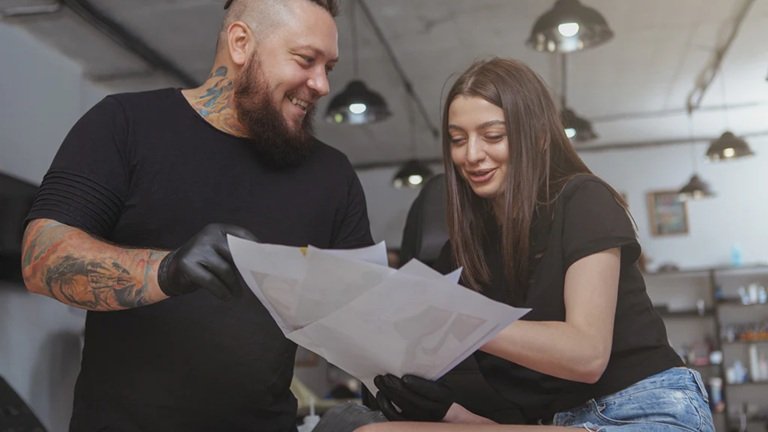
📢 Talk to Your Artist
If you’re nervous or unsure, don’t hesitate to consult with your tattoo artist before booking your session. Discuss design ideas, placement, pain levels, and any concerns you might have. Clear communication helps set expectations and leads to a tattoo you’ll love.
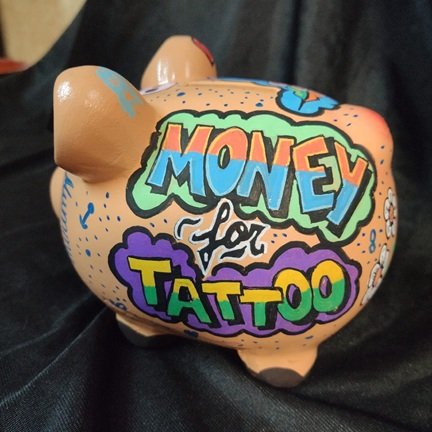
💰 Budget Wisely
A high-quality tattoo is an investment. While it may be tempting to go for a cheaper option, saving up for a skilled artist ensures your tattoo stays sharp, vibrant, and well-executed for years to come.
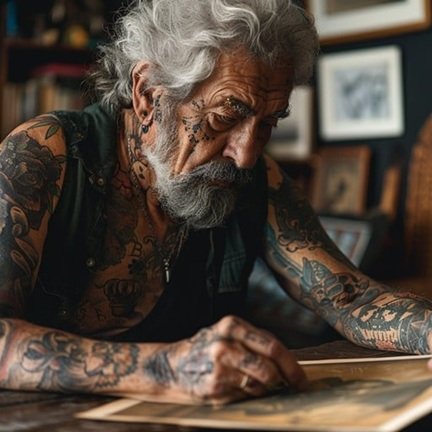
Think About Placement
Consider where you want your tattoo and how it might be affected by factors like sun exposure or workplace policies. Pain levels also vary depending on the location, so if you’re unsure, seek advice from your tattoo artist.
Taking the time to reflect on these points will help ensure your first tattoo is a decision you’re happy with for a lifetime!
 Considering A Sleeve Tattoo?
Considering A Sleeve Tattoo?
Thinking About a Sleeve Tattoo? Here’s What Experts Want You to Know
Sleeve tattoos—big, bold, and attention-grabbing—might not be for everyone, but don’t dismiss them just yet. If your only perception of a sleeve is a full-arm design or a cluster of tattoos that blend together, you’re missing out on a wide range of artistic possibilities. Thanks to social media platforms like Instagram, discovering unique tattoo styles and techniques is easier than ever, making it possible for even the most hesitant individuals to find a design they love.
Since tattoos are a lifelong commitment—especially those on the arms, which are harder to conceal—it’s crucial to be certain about the design, placement, style, size, and color. To guide you through the process of getting a quarter, half, or full sleeve, we consulted tattoo artists Amanda Wachob and Bryan Gutierrez. Here’s their expert advice on what to consider before committing to a sleeve tattoo.
👉 Finding the Right Artist
For a small, discreet tattoo, almost any artist will do. But for large, intricate designs like a sleeve, choosing the right artist is essential. “Tattoo artists specialize in different styles,” Wachob explains. “It wouldn’t make sense to ask an artist known for traditional Americana tattoos to create something delicate and fine-lined.” The key is to find an artist whose work aligns with your vision.
📌 Social media is a valuable tool for discovering artists, but Wachob advises against sending direct messages. Instead, visit their website to check their preferred booking process or sign up for their mailing list for updates.
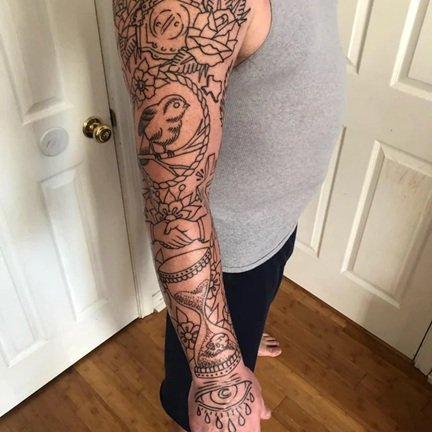
📆 Schedule a Consultation
Once you’ve found an artist, book a consultation to get a feel for their studio and artistic approach. If your chosen artist isn’t local, Wachob suggests making the trip. “Not everyone has the same skill set, and this tattoo is permanent,” she notes.
Consultations also provide an opportunity to refine your design ideas with professional input, ensuring that you’re happy with the final concept before getting inked.

🎨 Choosing a Design: Find the Right Balance
With a large canvas like your arm, the design possibilities are nearly endless. However, it’s important to select a timeless piece rather than something overly trendy. “Think about yourself 10 years from now,” Wachob advises. “If the design still resonates, it’s a good choice.”
Gutierrez points out that trusting your artist is key. “If you love their aesthetic, you’ll likely be happy with whatever they create, even if it’s different from your original idea.”
📢 While it’s important to communicate your vision, allow room for artistic collaboration. Wachob cautions against micromanaging the process, as it can stifle creativity and enthusiasm.
Placement and Size Considerations

Sleeve tattoos come in three main sizes: quarter, half, and full sleeves. Your artist will help determine the best placement and flow for your chosen design. Wachob suggests positioning standout elements in more visible areas, like the outer arm, while considering the body’s natural contours to ensure the tattoo looks organic rather than “stuck on.”
Planning Your Sleeve Tattoo
Some people start with scattered tattoos and later tie them together, while others plan an entire sleeve from the beginning. Wachob prefers a structured approach: “For large designs, I consult with clients first, then schedule sessions every two weeks until completion.”
The timeline for completing a sleeve varies greatly. “Some people finish in two days, while others take a year or more,” Gutierrez says. “Planning in advance eliminates guesswork.”
Seamlessly Incorporating New Tattoos
If pre-planning feels restrictive, you can gradually build your sleeve over time. To ensure cohesion, your artist might use a continuous background design or maintain a consistent theme. Wachob recommends gathering references that inspire you and sharing them with your artist.
For those who prefer an airy, less overpowering look, Gutierrez suggests keeping more skin visible and working with artists who have similar styles.
Embracing Color in Your Sleeve Tattoo
Adding color can make a sleeve pop, but some worry about overwhelming the design. Gutierrez reassures that color doesn’t automatically mean bold or harsh—technique plays a bigger role. “Some artists work with softer, more delicate shading techniques,” he explains.
However, color tattoos require more maintenance, especially with sun exposure. “They tend to fade faster than black and gray tattoos,” Gutierrez notes, so extra care is needed to maintain their vibrancy.
Budgeting for a Sleeve Tattoo
Tattoo pricing varies based on the artist’s rate, design complexity, and time required. Full sleeves typically start at $2,000 and can go much higher.
“Some artists charge per piece, others hourly, and some have a day rate,” Wachob explains. “But a tattoo is a lifelong investment, not something to bargain hunt for. If an artist’s work speaks to you, save up for it—it’s worth the investment.”
FAQ
💰 How much does a sleeve tattoo cost? The cost depends on the artist’s rate and design complexity. A full sleeve typically starts at $2,000 and can increase significantly.
🕒 How long does a sleeve tattoo take? A full sleeve can take anywhere from 12 to 80 hours, depending on intricacy and color.
📑 How do you plan a sleeve tattoo? Decide whether you want one cohesive design or a collection of smaller tattoos. Consult with an artist to determine the best approach, as multiple sessions will be needed for outlining, shading, and color application.
 Talking with Your Tattoo Artist
Talking with Your Tattoo Artist
Tips for a Smooth and Collaborative Tattoo Experience: What to Do and What to Avoid
Do:
1️⃣ Spend ample time thinking about your tattoo idea before booking your appointment.
2️⃣ Bring visual references or examples that reflect the design or theme you have in mind.
3️⃣ Trust your artist’s expertise and allow them to add their creative touch.
Don’t:
1️⃣ Ask for an exact replica of someone else’s tattoo or image.
2️⃣ Push for multiple small alterations during the design process.
3️⃣ Over-manage your artist by constantly asking for changes.
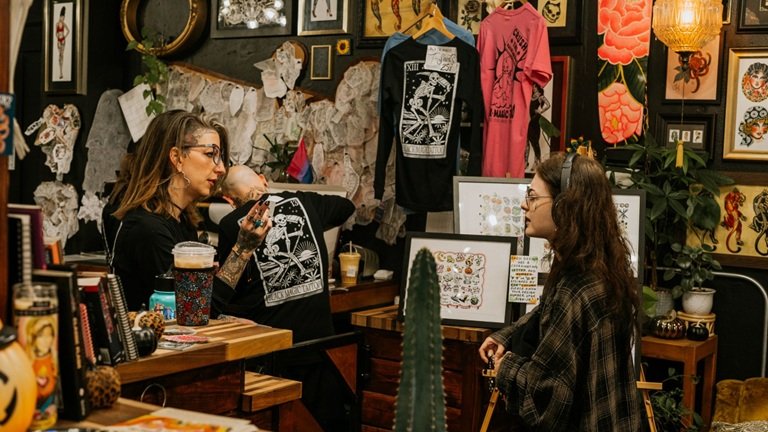
Additional Tips:
1️⃣ Be prepared for your consultation by deciding on key details like size, color, and placement.
2️⃣ Share images from other artists to express the style you want, but let your artist have creative freedom.
3️⃣ Understand the distinction between pop culture portraits and simple reproductions
4️⃣ Communicate your preferences clearly but remain open to collaboration.
5️⃣ Avoid asking for excessive revisions during the design phase.
6️⃣ Respect your artist’s suggestions and ask about any modifications to your original concept.
7️⃣ Choose an artist whose style matches your vision.
8️⃣ Trust that your artist will bring your idea to life.
9️⃣ Keep in mind that the creative process takes time, and be prepared for additional charges if needed.
Remember, a tattoo is a unique, permanent piece of art. Building a respectful and collaborative relationship with your artist ensures the best possible result.
 Mistakes to Avoid When Getting a Tattoo
Mistakes to Avoid When Getting a Tattoo
Mistakes to Avoid When Getting a Tattoo
Tattoo mishaps always grab attention—whether it’s a misspelled word or a poorly executed design, there’s something captivating about a permanent mistake. The idea that any of us could end up with a “Rest in Piece” or a tattoo that looks like a digital sketch adds an element of morbid curiosity. But don’t worry! We’ve put together a foolproof guide to help you avoid becoming the subject of a “tattoos gone wrong” list. With a little planning, research, and common sense, you can walk away with a tattoo you’ll love for a lifetime!
1️⃣ Do Your Research on the Artist
The most important step when getting a tattoo is to thoroughly research your chosen artist and check their portfolio. Look at healed tattoos to get an idea of their work’s quality. Platforms like TattooMe are great for this. For bigger or more complex designs, make sure to have a consultation with your artist to discuss the details and expectations. If the artist skips this step or doesn’t seem invested in your vision, it’s a red flag.
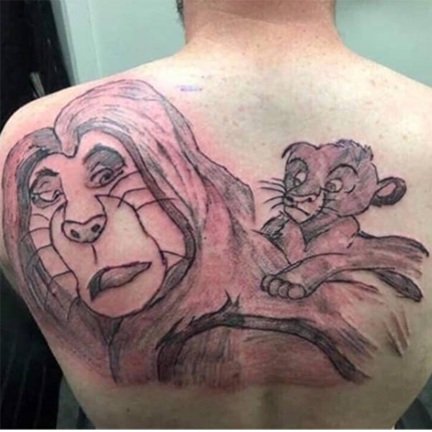
2️⃣ Don’t Go for the Cheapest Option
As the saying goes, “You get what you pay for.” This is especially true for tattoos. Even smaller tattoos are an investment, and quality work will cost you. Think about the lifelong commitment to your skin, and ask yourself if it’s worth saving a few bucks for a potentially regrettable outcome. If you’re unsure, it’s worth waiting until you can afford a tattoo you’ll truly love.
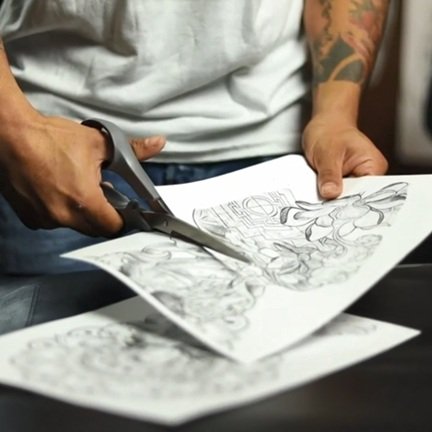
3️⃣ Double-Check Your Design
A good tattoo artist should catch any spelling errors, but it’s still smart to double-check your design before you get inked. Beyond spelling, look over every detail—especially for quotes or landmarks. It’s a good idea to ask a friend or use Google to verify things before you finalize your design.
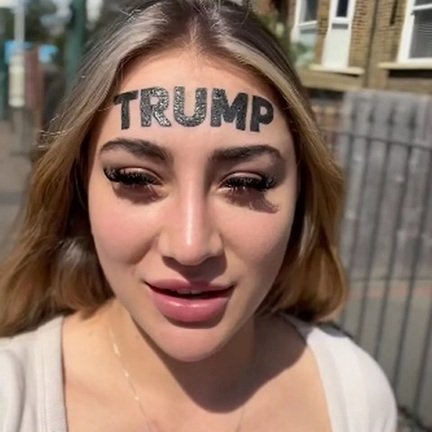
4️⃣ Avoid Controversial or Offensive Designs
While humor and perspectives change over time, tattoos are forever. Avoid choosing designs that could be considered offensive or controversial. This will help ensure your tattoo remains something you’re proud of, without causing discomfort to others down the road.

5️⃣Dress for the Appointment
Think ahead when selecting your outfit for your tattoo session. Consider the area you’re getting inked—wear loose-fitting clothing to avoid discomfort or complications. If you’re getting a thigh tattoo, skip the tight jeans, and if you’re getting a sleeve, don’t wear snug long sleeves. Comfort matters, both for the session and the healing process.
6️⃣ Follow Aftercare Instructions
The work doesn’t end when you leave the studio. Proper aftercare is key to ensuring your tattoo heals well and looks great. Follow your artist’s instructions carefully to give your new tattoo the best chance to heal beautifully.
By keeping these tips in mind, you can embark on your tattoo journey with confidence, avoiding regret and ensuring you love your ink for years to come!
 Pros and Cons of Neck Tattoos
Pros and Cons of Neck Tattoos
Pros and Cons of Neck Tattoos: What You Should Know
Neck tattoos have gained significant popularity in recent years as a bold and expressive form of body art. However, before getting inked on this highly visible area, it’s important to consider both the benefits and challenges associated with neck tattoos.
Pros:

Visibility & Self-Expression: One of the most appealing aspects of a neck tattoo is its visibility. It’s an easy way to make a statement and express individuality. Whether it’s a meaningful design or a personal symbol, a neck tattoo can reflect your unique style.

Conversation Starter: Due to their visibility, neck tattoos often spark curiosity and can lead to interesting conversations. They can be a way to connect with others who appreciate body art or share similar interests.
Creative Potential: The neck offers a relatively small yet dynamic canvas for creative and intricate designs. Popular styles include script, geometric patterns, animal portraits, and more. These tattoos can serve as a powerful form of personal creativity.

Cons: Professional Impact: One of the most significant downsides is how a neck tattoo may affect career opportunities. Many employers, particularly in industries like law or finance, still maintain strict policies against visible tattoos. While some companies are becoming more tolerant, it’s wise to consider how a neck tattoo might impact your professional life.
Pain & Healing: The skin on the neck is thinner and more sensitive than other areas of the body, making the tattoo process potentially more painful. Additionally, due to the high mobility of the neck, healing can be more challenging. Following aftercare instructions closely is essential to ensure proper healing.

Sun Exposure & Fading: Neck tattoos are constantly exposed to sunlight, which can lead to faster fading. The neck’s skin is also more fragile, which can affect the longevity of the tattoo. You’ll need to be mindful of sun protection to maintain the tattoo’s appearance over time.
Pain Tolerance & Commitment: The level of discomfort during the tattooing process varies depending on your pain tolerance, and the neck area is particularly sensitive. Moreover, tattoos require ongoing care to ensure they heal properly and stay vibrant.
Final Thoughts:
Getting a neck tattoo is a highly personal decision that involves more than just picking a design. It’s important to weigh the pros and cons carefully, considering how it might impact your career, lifestyle, and appearance. Choosing an experienced artist who understands your vision is key, and making sure you’re prepared for the healing process and long-term maintenance is essential. If you decide to go for it, a neck tattoo can be a powerful form of self-expression, but it’s important to approach it with careful thought and preparation.
 Risks When Getting a Tattoo
Risks When Getting a Tattoo
Yes, getting a tattoo does come with some risks. These include the possibility of infection, allergic reactions to the ink, scarring, and the transmission of blood-borne diseases.

To reduce these risks, it’s essential to select a skilled and reputable tattoo artist and shop, ensure that hygiene and sterilization practices are strictly followed, and adhere to aftercare instructions.

Additionally, it’s important to keep in mind the potential long-term effects of tattoos, such as fading, distortion, or changes in the skin over time.
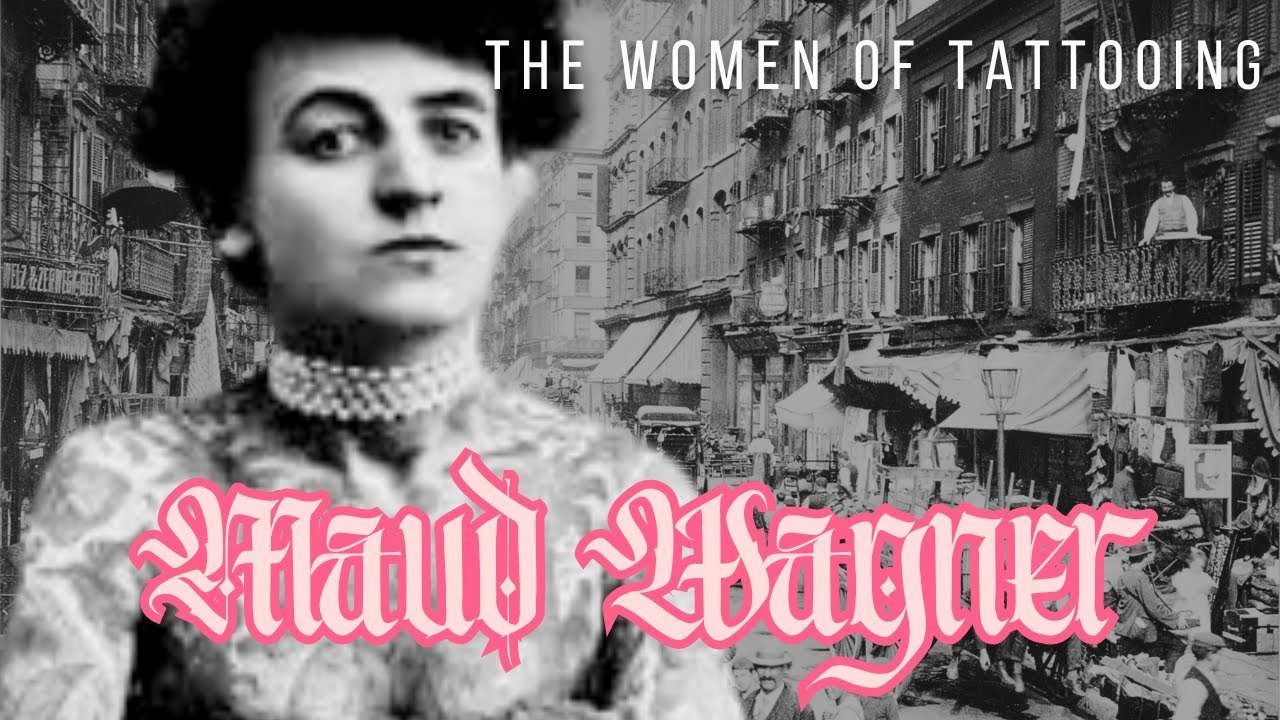 America’s First Female Tattoo Artist
America’s First Female Tattoo Artist
The Colorful Story Of Maud Wagner, American History’s First Female Tattoo Artist
By Kaleena Fraga | Edited By John Kuroski
Published May 13, 2021
Updated April 29, 2024
An aerialist in the circus at the turn of the 20th century, Maud Wagner broke barriers by both giving and receiving hundreds of tattoos.
At the St. Louis World’s Fair in 1904, an aerialist named Maud Wagner struck a deal with a tattoo artist. She would go on a date with him — if he taught her how to tattoo. Thus began the two most important love affairs of Wagner’s life: the tattoo artist and tattoos themselves.
Not only did Wagner marry the tattoo artist, but she also covered her body in ink — just like him. Her pale skin suddenly blossomed with colorful depictions of lions and butterflies and trees. Magnificent illustrations stretched across her chest, up to her collarbone, and all over her arms.
But Wagner was more than just a canvas for other people’s art. She learned the arduous “hokey-pokey” tattooing method from her husband and began to create artistic designs of her own.
Her skill made her the first female tattoo artist in the United States — as well as an emblem of self-determination when women had few rights.
This is her story.
Maud Wagner
History Uncovered Podcast
Episode 19: Maud Wagner, The Taboo-Defying Tattoo Pioneer
The first-known female tattoo artist in U.S. history, Maud Wagner rewrote the rulebook for what women could do in turn-of-the-century America.
Maud Wagner And The Needle
Tattoo Article From 1902
Tattoo MuseumA 1902 article describes how Victorian women sought “little fanciful designs” to “adorn themselves.”
Maud Wagner, neé Stevens, was born on February 12, 1877, in Emporia, Kansas to David Van Buran Stevens and Sarah Jane McGee. Little is known about Wagner’s early life. But for some reason, she drifted toward the world of traveling circuses, where she would become an aerialist and contortionist.
Wagner would have encountered few openly displayed tattoos in her youth. But tattoos were a popular — if hidden — fad among the upper classes at the end of the 19th century. Even Winston Churchill’s mother had a tattoo (of a snake eating its tail). And in 1897, The New York World guessed that some 75 percent of American society women had tattoos.
Victorian-era women who could afford it would have gotten small tattoos, easily hidden beneath the long sleeves and high collars of their day. But the trend was waning. Tattoos, snipped one socialite in 1920, were suitable “for an illiterate seaman but hardly for an aristocrat.”
It was a different story in the circus.
1904 World’s Fair In St. Louis
Missouri State Archives/FlickrCrowds gather at the 1904 World’s Fair in St. Louis, where Maud Wagner met her future husband.
In 1904, at the Louisiana Purchase Exposition (also called the St. Louis World’s Fair), Wagner met her future husband, August “Gus” Wagner.
Gus stood out even among other circus folks. Known as “The Tattooed Globetrotter,” Gus had nearly 300 tattoos. He claimed to be the “most artistically marked-up man in America.” Over the course of his life, Gus Wagner would collect some 800 tattoos across his entire body.
“I’ve got a history of my life on my breast, a history of America on my back, a romance with the sea on each arm, the history of Japan on one leg, and the history of China on the other,” he was known to boast to onlookers.
Gus Wagner
The Alan Govenar and Kaleta Doolin Tattoo Collection/Courtesy of The Seaport MuseumGus Wagner’s impressive collection of tattoos, as depicted in a self portrait.
He regaled Maud with stories of his adventures on the high seas. Gus described how he had seen his first tattooed man at the age of 12 — “Captain Costentenus the Greek Albanian” at a traveling show — and how he had learned hand-tattooing techniques from tribes in Java and Borneo.
Although a man named Samuel O’Reilly had invented and patented the first electric tattoo machine in 1891, Gus apparently chose to continue with the simpler and more arduous stick-and-poke method.
Maud was intrigued. As the story goes, she agreed to go on a date with Gus if he would teach her how to give tattoos.
Gus Wagner Tattooing Maud Wagner
YouTubeGus Wagner tattooing Maud Wagner.
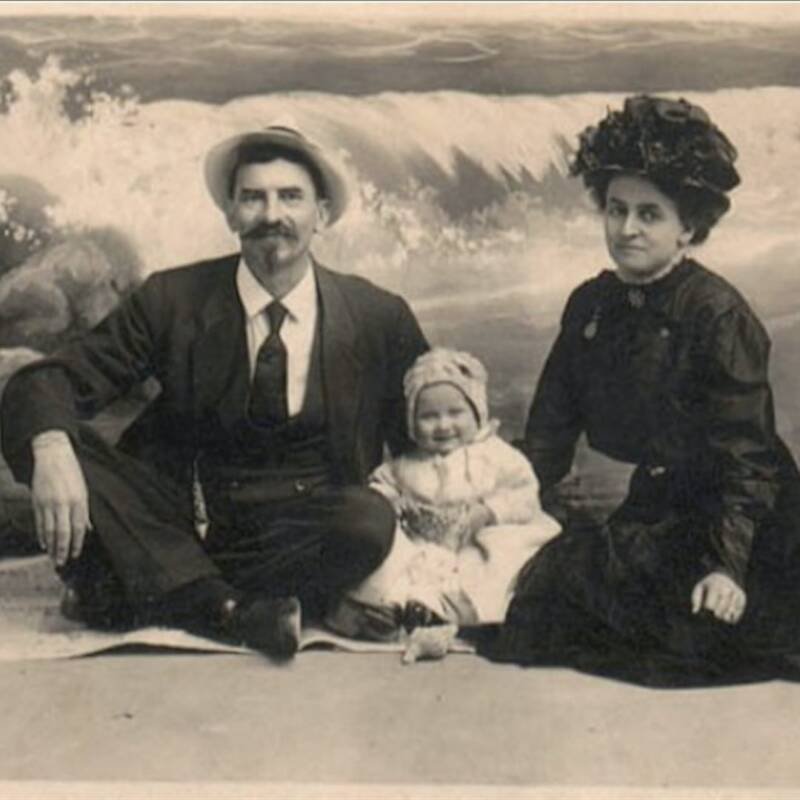
A deal was struck — and Maud fell in love with both the man and the needle. They married some months later on October 3, 1904, and they soon welcomed a daughter named Lotteva.
Before long, Maud began to grow a collection of tattoos all her own.
The First Female Tattoo Artist In The United States
Gus And Maud Wagner
Gus and Maud WagnerGus and Maud Wagner were some of the last tattoo artists to give tattoos by hand.
Maud Wagner’s tattoos were typical of the period. She had patriotic tattoos and designs of animals like monkeys, snakes, and horses. And she also had her own name inked on her left arm.
But there was nothing typical about Wagner.
She and her husband were covered in tattoos and became popular circus attractions because of it. They might have earned as much as $200 a week (about $2,000 today) just for displaying their inked skin to the public.
However, the flare of tattoo popularity at the end of the 19th century had faded. Newspapers had begun to drum the warning that tattoos could spread venereal diseases. And tattoo artists could be hard to find — people couldn’t just waltz into a tattoo parlor like they do today. By 1936, LIFE Magazine estimated that only 6 percent of the American public had tattoos.
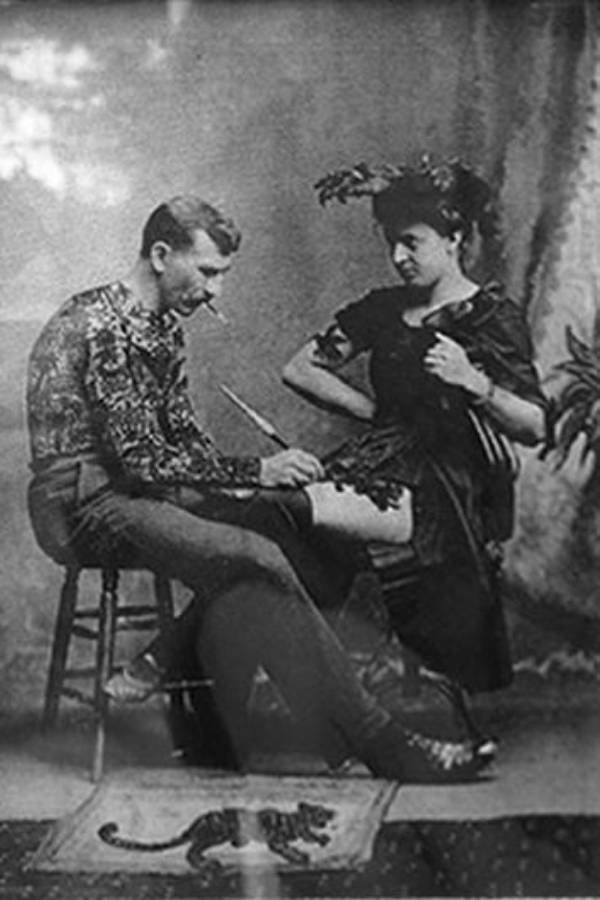
But if you wanted a tattoo, Gus and Maud Wagner could help. The couple gave tattoos — to both their circus colleagues and curious audience members — inking as many as 1,900 people over just a few months.
In an interview with the Dallas Morning News, their daughter Lotteva recalled that most of her parents’ customers wanted “tattoos of their pet dogs, cats, lovers’ hearts, butterflies, and birds. How they do love birds.”
The Wagner Family
Gus and Maud WagnerThe Wagner family looked perfectly “normal” when they covered up their tattoos.
Their tattoo work could be so lucrative, she added, that “my father probably earned as much as a bank president at the fair.”
Over time, Gus and Maud Wagner would work in vaudeville houses, penny arcades, county fairs, and Wild West shows. They found work as tattooists, tattooed attractions, and circus performers. Working alongside her husband, Maud Wagner became the first female tattoo artist in the United States.
But she and Gus could blend in when they wanted to — the conservative clothing popular in the early 20th century effectively masked their colorful skin. Even so, their neighbors in Kansas still told stories about the “circus freaks” next door to scare their children straight.
Gus, who had lived an unconventional life, died in an unconventional way. He was struck by lightning in 1941. Maud died two decades later, in 1961.
Their daughter carried on their tradition. Although she never got tattoos herself — apparently, Maud forbade Gus from tattooing their daughter — Lotteva started tattooing others when she was just nine years old.
“Mama wouldn’t let Papa tattoo me,” Lotteva said. “I never understood why. She relented after he died and said I could get tattoos then, but I said that if Papa couldn’t do them like he had done hers, then nobody would.”
Maud Wagner’s Legacy Today
Tattoo Artist At Work
Maud Wagner would have stood out in her time. Today, she wouldn’t attract much attention walking down the streets of Los Angeles or Brooklyn.
But Maud Wagner broke some important barriers in the early 20th century. Not only did she become the first female tattoo artist in the United States, but she also covered her own skin with tattoos — taking ownership of her body in a time when American women couldn’t even vote.
In this way, Maud Wagner is also part of a larger trend involving women and tattoos. American women in modern times are actually more likely than men to have ink (23 percent versus 19 percent, according to a 2012 poll). And there may be a reason for that.
In the book Bodies of Subversion: A Secret History of Women and Tattoos, Margot Mifflin argues that feminism and tattoos are linked.
“Tattoos appeal to contemporary women both as emblems of empowerment [and] self-determination,” Mifflin wrote. Especially at a time “when controversies about abortion rights, date rape, and sexual harassment have made [women] think hard about who controls their bodies — and why.”
Women today have also used tattoos as a way to regain control over their bodies after mastectomies. And in some cases, they can actually bill such tattoos to their insurance companies.
Since Wagner was such a trailblazer in the world of tattoos, there’s no doubt that she helped pave the way for modern women to take these leaps.
By taking ownership of her body, Maud Wagner was a woman before her time — a circus performer and an artist whose greatest creation was displayed on her own skin.